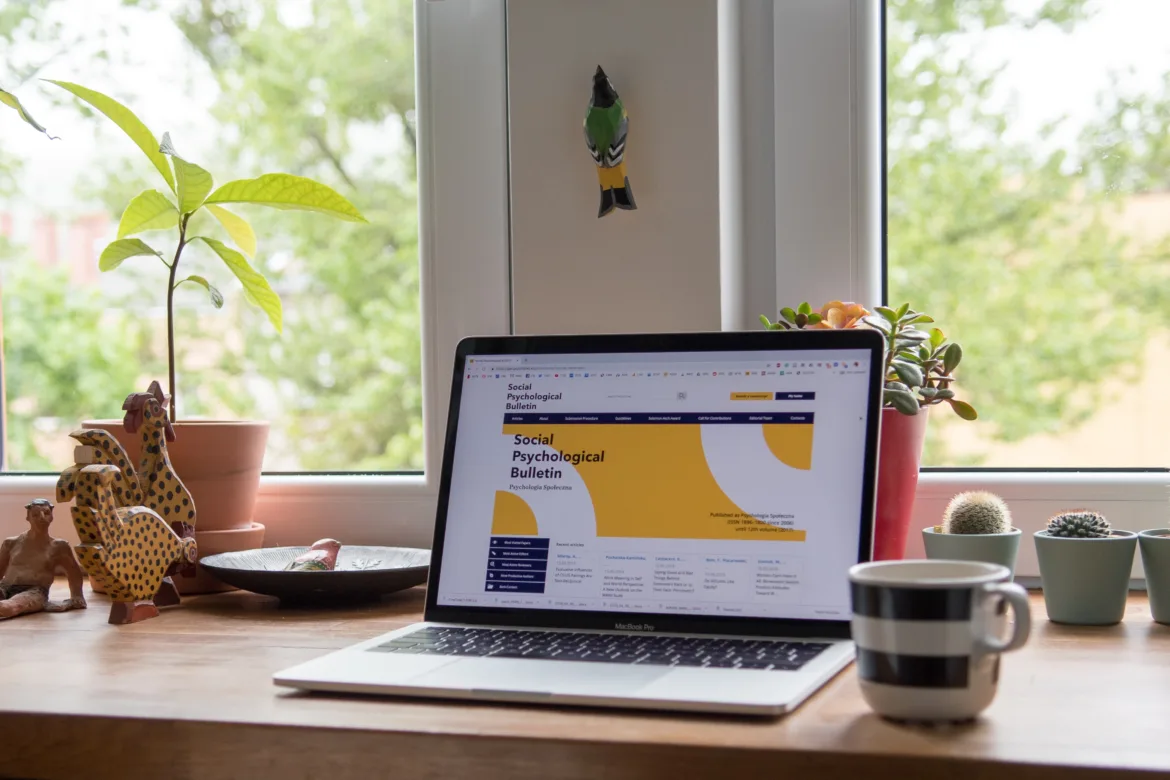The post is based on the author’s personal observations and doesn’t represent any entity or business.
Full remote, hybrid policy, office only
Post-COVID, there’s a hard conversation about getting people back to the office. It comes with a subtle, little data-driven idea of improved efficiency, better collaboration and higher creativity, with no single stance of office work being anywhere better than the hybrid and/or full remote options. I have noticed 3 different paths being adopted in this era:
- Companies which continue to offer hybrid/full remote options. They either have struggled to compete for talent in their major R&D locations, have got their asynchronous work streamlined or a combination of both.
- Companies which announced a full return to the office. FAANG is the pioneer here and a lot of Silicon Valley have followed, whether it’s a startup looking for an office in SF’s downtown or a bigger corporation which has invested millions in their decade-long office rent.
- Companies which embraced full remote, cancelled their office rent and are happy to carry on in this mode. Not the majority but there’s a variety of choices, even scrolling through recent HN’s “who’s hiring <monthname>” posts.

US struggle is real. Full return to the office, after when you moved with your family to a cheaper location, is extremely complicated. The house pricing in the office areas hardly remained the same, it mostly went up due to an increased demand when a number of companies announced the return to the office. But that’s not the only problem:
- Finding someone to look after your kids on short notice is impossible. If you’re an expat from another country and your parents/grandparents living a thousand miles away, that’s a hefty expense to bear.
- Joining 7 a.m. Zoom meetings to chat with your European colleagues were more or less okay-ish when you remained the rest of the day at home. Now you face bad and worse choices: either you drive to the office after, hitting the rush hour or you come to the office even earlier, so you can join the meeting from there.
- Dealing with other obligations like a doctor’s visit, a plumber fixing something or just merely not feeling well enough to visit the office but not bad enough to call it sick would be another conversation with your manager to go through.

European colleagues, on the other side of the ocean, are not beating the drum and marching happily back to the office. While they do have better public transportation, eliminating the problem of rush hours, staying late in the office to Zoom with US colleagues was never something thrilling before.
The huge advantage of hybrid work, that allowed you to run your house errands after lunch, and then spend a few evening hours catching up over Zoom. It’s slightly easier to get your kid to visit the parents (or vice versa) across the EU because distances are shorter. There are more kindergartens and preschool services available (even though you need to queue years in advance). Birthgivers typically have 2-3 years of maternity leave guaranteed by the government. And it’s further boosted by a partner getting up to 6 months month extra parental leave, as a common tech sector benefit.
EU is also taking more steps to put the churn of home office expenses back to the employer: introducing different regulations, where companies have to cover their employees’ electricity costs have they decided to keep a hybrid policy.
Probation and notice periods
It never stops amazing the author, how the typical US two-week notice period is even a thing in the tech sector today. With a cumbersome interview period, where one has to go through multiple rounds at a single company, time to learn the company’s product, its financial health and dig some data on Glassdoor/Reddit/etc. about working conditions. I barely see even applying to a couple of companies at the same time being stressful. The good thing is on-site interviews are mostly gone and you don’t need to prep somewhere in the airport lounge.
The same goes for the probation period. Yes, you can structure the interviews in a way that exposes the candidate to as many future team members as possible. Yes, you can have an advanced and well-structured onboarding workflow, where your newly arrived employee has the opportunity to get up to speed at their own pace and with minimal supervision.

However, Europe’s two to three months probation period and similar notice one eliminate the rush component US employment struggles from. It gives employees enough time to settle down at their new place, meet colleagues, learn the materials and start their contribution. It gives employers enough data to see where the interview process could slip a behaviour issue undetected. If something went south, as the employer, you’d have a couple of months to decide either to address it or to part ways.
The same is true for employees: a sufficient notice period creates a stress-free environment to look for your next career stop. This means enough time to prep for interviews with an opportunity to learn about your future employer. It gives employers leverage to request a decent knowledge transfer period and to recruit a replacement. The downside is the speed – ramping up a team in two weeks versus in two to three months is a HUGE difference, especially when your business urges a quick scaling.
Feedback, storytelling, visual importance
The picture below is a known meme but I feel it nails down my experience. The contrast is especially palpable for anyone who worked with Scandinavian countries, which have their directness and keeping it “to the point” maxed out. While giving any feedback is an art on its own, getting a straightforward opinion from your not-so-well-known American colleague at work is a challenge. The downside of European fairness is being focused too much on the negative side and rarely highlighting any positive moments – whether it’s about work done on a project level or a person’s own contribution to it.

While feedback standards might be challenging to influence, I tend to bias myself into saluting American’s storytelling approach. Attempts to sell/pitch something by convincing a group of people it’s a good idea feel superior to the European’s cold-showered “well, it’s obvious we need to do this”. And that’s where EU folks struggle to succeed while working at the US-originating branch – they diminish the need to create a compelling story. Yes, you need to figure out a marketing and sales pitch to make followers and only then go into implementation mode! The downside of American storytelling is the overhead – to prepare, pitch and sell one is only part of the time sink. Weeding out some tangible feedback between the lines of fluff diplomatically-oriented words is a skill on its own 🙂
That’s why the visual part plays an important role. In the form of a well-designed presentation, a tailored suit or an upscale restaurant to treat your (future) customer while conducting business in the US. I’m not saying that salespeople in the EU should trash their expensive suits and start to invite their VIP customers for a quick meal at McDonald’s. But if you look at the typical individual contributor work, you could notice the visuals have clearly different priorities across the oceans.
Working hours, overtime and holidays
When I first moved to the EU country, a colleague met me at the airport. They decided to reduce my cultural shock associated with the relocation. One of the items coming up was people typically leaving their desks at 5:00 p.m. sharp. I thought it was a joke 🙂 Fast forward to the office and I could barely see any folks by 6 p.m. On Friday, it was even earlier since people left the city for a long weekend.

With more companies opening their EU branches, that’s not a common thing anymore. However, COVID gave a lot of flexibility: both your starting and finishing hours, both for US and EU employees. As long as you attended the daily meetings, you were good to procrastinate arrange the rest of the day as you see fit.
Another thing worth mentioning is the Europeans’ sacred weekend time. Some folks are usually in their weekend mood on Friday morning, rushing to leave the city soon after lunchtime. Also, it helps to avoid Friday’s afternoon traffic jams. There’s no question about working on the weekend – it’s an absolute violation of your private life, and any attempts to impose anything work-related are met with a lot of pushback. Even if your maintenance windows within a trading company could be weekend-only. Some EU countries went further than that, moving to a 35-hour working week or closing their shopping malls on Sunday.
In the US, I couldn’t imagine anything like that being implemented in the near future. Within my company bubble, asking colleagues about weekend plans was typically down to the “I do house chores, go shopping and then check my work emails” thing. Maybe it was a trust issue? And I shouldn’t expect every person at work to share their private life in full. During my week-long trips to the US, I could entertain myself with a hiking trip, going to a shopping mall or imagining participating in some pre-planned event like a football game or a concert. There’s no such thing as going to the city centre by tram to grab coffee with my friends or seeing the new art exhibition. Local neighbourhood farmers’ markets to buy fresh cheese and milk from home-owned businesses are quite popular in Berlin but I couldn’t find any in San Fransisco. Maybe I had to look in a bigger city, like New York? Oh, and I rarely buy a month-long supply of bread, milk, butter and cheese in the EU country too.

Working overtime or over holidays puts the US at a disadvantage too. From what I heard so far, being compensated for an overnight incident recovery or weekend maintenance is not something paid separately, usually it’s part of your overall annual compensation and no strict amount of overtime hours is imposed. Within the EU, it’s quite the opposite: as the employer, you have to pay employees several different wage increases. Some of the examples:
- 10% increase for each hour of work outside of defined working hours. I.e. for the contracted 9 am to 5 pm working schedule, every hour past 5 pm has to be paid extra (overtime).
- 25% increase for each hour of work past midnight or over the weekend. These are tracked separately from the 10% overtime work above.
- 100% increase for any work done on a public holiday. Employers usually choose to compensate with an extra holiday to the employees’ balance but employees can demand it being paid to their wage.
All the above overtime hours are strictly regulated per week, month and year. Sometimes it’s a big surprise – both the extra payment and the hard hour limit – for the US employees and business owners.
One company for life vs. a new company every now and then
I worked for a German market maker, providing trading services for Frankfurt’s stock exchange and this message struck me hard on the day I saw it. There was an email congratulating a colleague for a work anniversary and nothing came as a surprise from its subject. However, it’s the tenure of that person working for 42 (!) years in the same company: since they joined as a post-graduate student and now successfully retiring at the age of 60 and something.
I looked at my CV which had the longest tenure of 5 years in the same place. So I decided to explore this topic during my US trips.

From what I heard, the tech industry standard is 2-3 years of staying in one place before you make the next move. If you’re lucky, you get promoted and stay in the same company. You might get a slight salary increase which is overcompensated by the comfort zone of the same employer. If you’re not lucky, you jump ship and hope for a bigger wage bump paired with the stress of a new environment. Now, you know the formula – rinse and repeat. The ideal outcome is your company’s stock goes over the roof, turning you into a millionaire. Then you either retire early or open your own business 🙂
US folks described this approach as being “hungry”. They see those 2-3 years in the same place as their opportunity to make an impact, to leave a dent, to contribute to success. What I observed in the EU country, a typical employee would rather look like a “get their job done and leave to spend time with family” kinda of guy than “I work my a** off to make an impact”.
The author’s assumption such a difference in mentality results in 99% of major IT news coming from a place like California’s Silicon Valley rather than Europe’s Berlin or Paris.
Breakfast, lunch and coffee culture
This one is the least explored and probably the most subjective. I would rely on the hive mind’s input in the comments to close my knowledge gap. So here’s my idea of the US approach:

- For breakfast: cooking is a no-go option. You either fill a bowl of instant oatmeal with milk, grab a coffee with toast or stop at a drive-through on your way to the office. Speed and efficiency over quality and nutritional value.
- Lunch is either served in the office canteen, a truck nearby or through the delivery. Mostly fast food, which can be quickly warmed up to a digestible state. Eaten at the office canteen fast or straight at the desk to work on that long-due presentation in parallel.
- Coffee is a caffeine-based drink, which comes in vast quantities throughout the day. Brand, taste, origin and other parameters are negligible – Starbucks is an absolute go-to place.
Once again, the author’s subjective idea is obesity and heart attack rates are directly influenced by (fast-)food habits and little physical movement between those sessions. Starbucks is everywhere and your typical dinner has unlimited coffee refills under $5 per sitting.

I don’t want to paint Europe’s eating habits as something ideal, even smaller countries face strange – at first glance – challenges. Yes, it is a decades-old tradition to have a croissant with an expresso for breakfast. But I see people within the EU approaching their food consumption in a healthier way. Starting from home-cooked meals, carefully packed in portable containers to be eaten at the office to the variety of services offering you 3, 4 or even 5 times per day diet depending on your calory needs. This comes with a decent number of restaurants and canteens within the city’s office district, where you can try a selection of local, European and Asian cuisine.
Coffee would be a separate paragraph. I will also skip Starbucks’ failed attempts to enter some local markets. Coffee in Europe is great, comes in a variety and, on average, is superior to everything I’ve tried in the US so far. From all kinds of espressos and batch brews to aeropress and pour-overs, from Ethiopia to Colombia to Puerto Rico, from orange with chocolate flavour to wildberry with rose one. It’s a strong tradition, now boosted with whole startups to help you discover different coffee places across the EU or get a freshly roasted coffee delivered to your home as a subscription service. People attend coffee classes to learn how to brew coffee better at home or enhance their taste palette and recognize new flavours. Not saying it’s not a thing in the US, but I feel a vast cultural gap in the coffee culture between the oceans. And yes, EU office coffee typically sucks.
Outro
When I first typed the post’s headline, it felt like I was writing a scientific article rather than a blog post. It’s weird cause the entire thing is based solely on my emotions and observations. What I hope to achieve is to bridge the gap on both sides. Folks in the EU getting a better understanding of the extreme pressure their US colleague might go through during their first two weeks in the company. And US folks shouldn’t expect a European person to answer work emails after 5 p.m. local time or over the weekend.
Of course, it’s different from place to place, but if you decide to open a business in the EU, you better factor in those overtime wage increases provided your product requires any of that.
I would love to further educate myself from the comment section and hear the stories of people cooperating across the ocean. What was the most puzzling, challenging or unexpected you have revealed while doing that? Let me know here or use the contact form to send those notes privately.

Leave a Reply